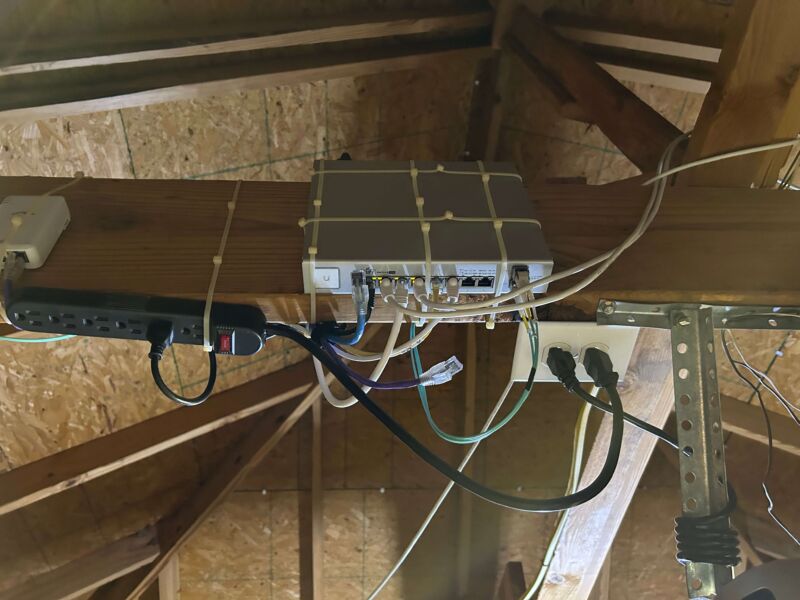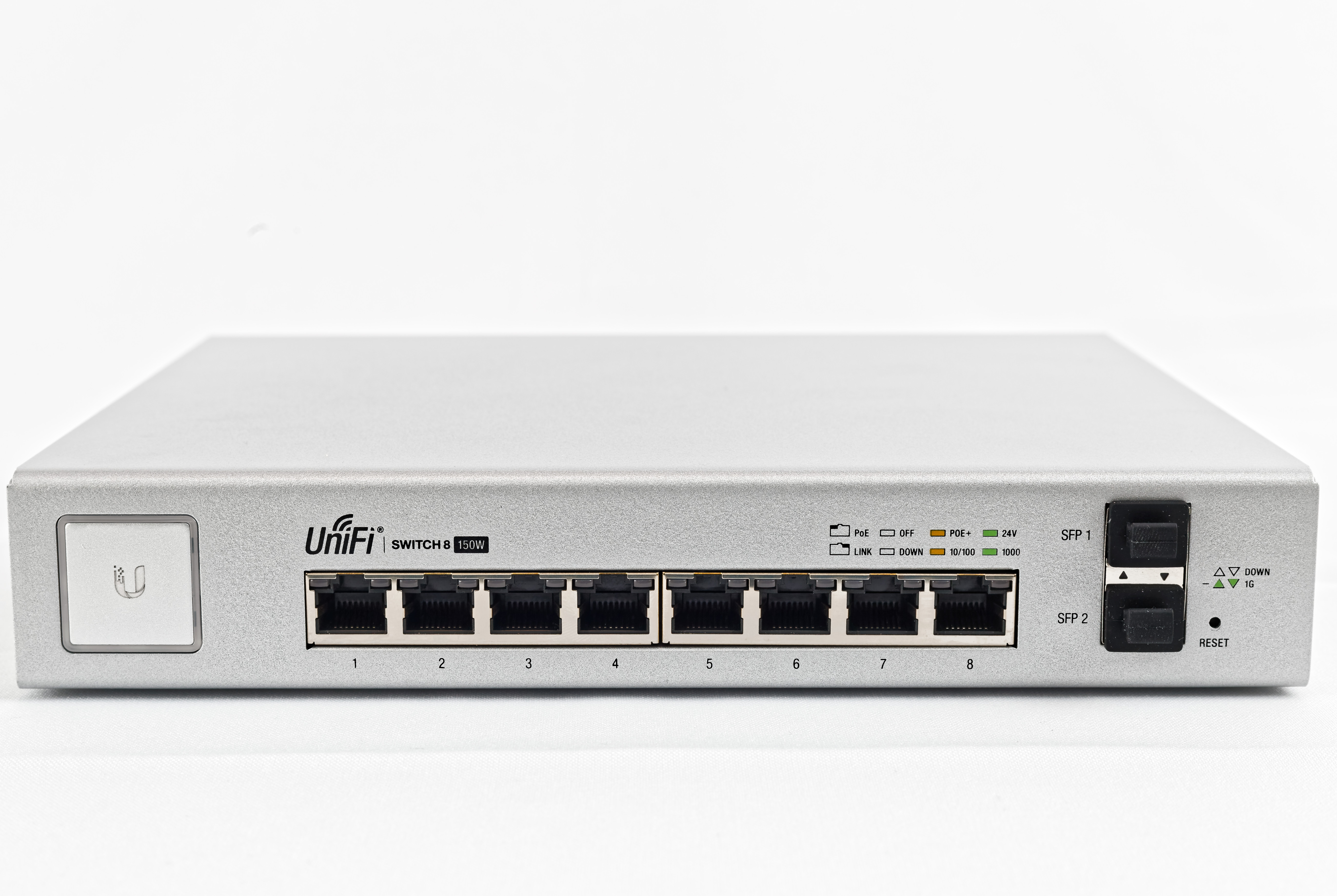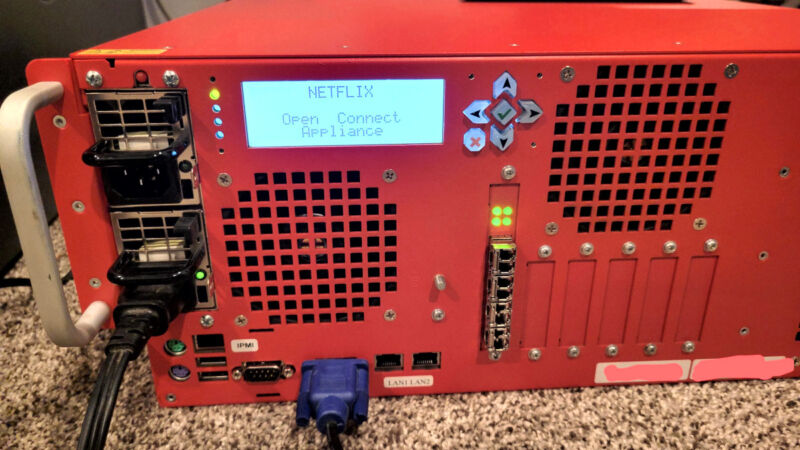
Enlarge
/
My original US-8-150W shortly before being replaced. Don't judge my zip-tie mounting job—it held for eight years! (credit: Lee Hutchinson)
This morning, I'd like to pour one out for a truly awesome piece of gear that did everything I asked of it without complaint and died before its time: my Unifi 8-port POE switch, model US-8-150W. Farewell, dear switch. You were a real one, and a lightning strike took you from us too soon.
I picked up this switch
back in January of 2016
, when I was ramping up my quest to replace my shaky home Wi-Fi with something a little more enterprise-y. The results were, on the whole, positive (you can read about how that quest turned out in
this piece right here
, which contains much reflection on the consequences—good and bad—of going overboard on home networking), and this little 8-port switch proved to be a major enabler of the design I settled on.
Why? Well, it's a nice enough device—having 802.3af/at and also Ubiquiti's 24-volt passive PoE option made it universally compatible with just about anything I wanted to hook up to it. But the key feature was the two SFP slots, which technically make this a 10-port switch. I have a detached garage, and I wanted to hook up some PoE-powered security cameras out there, along with an additional wireless access point. The simplest solution would have been to run Ethernet between the house and the garage, but that's not actually a simple solution at all—running Ethernet underground between two buildings can be
electrically problematic
unless it's done by professionals with professional tools, and I am definitely not a professional. A couple of estimates from local companies told me that trenching conduit between my house and the garage was going to cost several hundred dollars, which was more than I wanted to spend.






